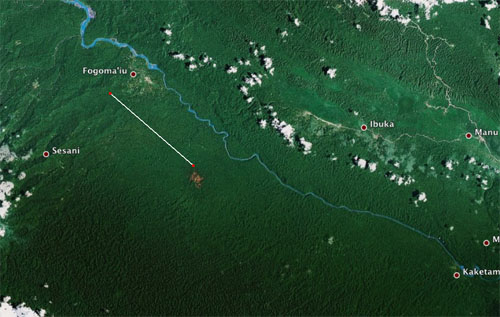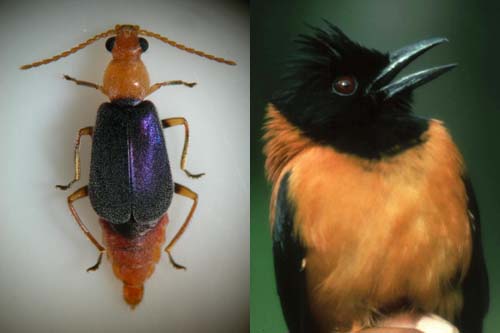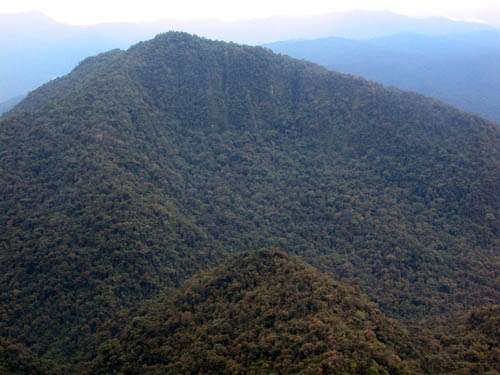Ahhh, Papua New Guinea...
In New Guinea, when you ask someone how far is it to the village or to the other side of the mountain, they say, "ino longwe, tupela haua tasol" or "not a long-way, just a couple hours." Often it ends up taking several days to get there. Right now I can feel my distance to PNG - the other side of the world - in days or even hours. And I'm starting to panic that I'll be ready to leave on time.
This trip is a special one. It's been nearly three years since my last visit, and apart from my home, PNG is my favorite place. The forests are beautiful and wild, the local people are lovely and alive, the animals are strange and fantastic. PNG is home to the world's largest butterflies and walking sticks, poisonous bird species, and forests that pulsate with the sound of insects and birds.
In the next 20 days, I will be traveling to the limestone karst country below Mt. Bosavi in Southern Highlands Province. Don't be fooled by the province name; we will be well out of the mountains and in the steamy-hot lowlands. This is rugged landscape strewn with jagged uplifted limestone and streams that disappear underground and appear again somewhere else. BBC has assembled a team of scientists - me to study birds from California Academy of Sciences, and along with colleagues from Smithsonian, Bishop Museum, Oxford University, PNG Institute of Biological Research, and other institutions, we will study mammals, insects, bats, plants, etc. We will be surveying the area's life and highlighting some of the gems that New Guinea has to offer...
Here's another GoogleEarth image of PNG showing the location Fogoma'iu village near our study site.
We'll be flying from the capital of Port Moresby by a twin-engine "Dash 8" to a small town along Lake Kutubu, and then flying in an even smaller "Twin Otter" to the jungle grass-strip at Fogoma'iu. From there, we will either float down the river to our bush camp, or if the river is too swollen from rain, we'll shuttle in on helicopters.
You can see the thick green lowlands around Fogoma'iu, with the flanks of Mt. Bosavi in the lower-left-hand corner of the screenshot. The white line is 5 miles long for scale.
Once there, I'll focus on birds. Pitohuis are my favorite species: jay-sized birds that carry a potent neurotoxin in their skin and feathers. I've studied them for years, and on this trip, we hope to study a little beetle in the genus Choresine that pitohuis eat to get their poisons. Where the Choresine beetles get their toxins is anyone's guess. I'll also study how cassowaries respond to low-frequency calls. Cassowaries are among the largest birds living in the world today - they are flightless ancient relatives of emus and ostriches. In New Guinea, the cassowaries send deep booming sounds into the forest - presumably to communicate with each other. The Macaulay Library of Sounds at Cornell University gave me 9 high-quality recordings to use in these experiments - thanks Tammy and Greg!
Here is a photo of Choresine pulchra (Pic), the toxic "nanisani" beetle, next to the Hooded Pitohui, Pitohui dichrous. Both carry potent neurotoxins, and presumably the pitohui picks up toxins from eating the beetles.
One last project that I am really excited about... Our colleagues (Joe DeRisi and his lab) at University of California San Francisco have engineered a DNA chip that screens for all known virus types, and can potentially help discover new viruses. We will be working with Joe's lab to see what old and new diseases are affecting wild birds on the island of New Guinea. This is important work, as many emerging diseases originate in wild places like New Guinea and jump to humans where people and wild animals come together. It's also important because wildlife on isolated islands can be devastated by the introduction of exotic diseases, so getting baseline data in wild places like New Guinea will help us to monitor pathogens in the region. Joe and his lab have been very generous and have provided us with most of the supplies we need to test the birds.
Here's some nice lowland hill forest not far from the area we're headed...
For more information about my work at California Academy of Sciences, you can check out some of my older blogs or click on my home page. You can read about the department's collections here.
To learn more about Papua New Guinea - stay tuned. I'll try to blog whenever I can from the BBC camp. For now, I have to start packing...




